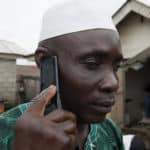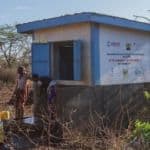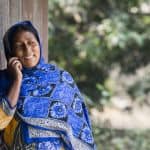WASH Away Inequity: Lack of Access to Safe Water is the Most Crippling Obstacle Limiting Human Potential
Today I am celebrating World Water Day. I think of the people who struggle to live without access to safe water every day, but on World Water Day, I ask you to think about them as well. Think about them not just in terms of the need, the hardship, the waste. Think also of their inherent value, and the value they could be bringing to the global economy. In this piece, I want to highlight the power of the poor to provide their own solution to the water crisis.
The World Health Organization and UNICEF recently released the most extensive and detailed analysis of global water, sanitation and hygiene ever produced, revealing that 844 million people, (that’s nearly 1 in 9 people), still lack a drinking water source that is accessible within a 30-minute round trip from their home.
People who lack safe drinking water are trapped in a persistent cycle of poverty, unable to reach their potential, unable to fully participate in the economy. Healthy, engaged, educated people are the foundation for the sustainable growth of communities, businesses and countries.
Reliable, daily access to safe water is essential to a family’s health and ability to earn. Access to safe water keeps girls in school, empowers women, and frees up time and income that they can invest in the future. Simply put, we won’t be able to unlock the potential of millions of our fellow human beings if we continue to ignore the staggering inequity we face today due to lack of water and sanitation.
I see this reality every time I travel in developing countries to visit our program sites and listen to our partners. The reason I made this my life’s work is that I believe lack of access to safe water is the most crippling obstacle limiting human potential.
For hundreds of millions of people, the solution is as simple as installing a tap or rain harvesting system. The technology is available. But the problem is that those living in poverty often cannot afford an upfront expense of $175–$200. However, they can repay a loan in installments over time. In fact, the poor often pay 10–15 times more per gallon of water than the middle class because they must buy a little each day. Simply redirecting those payments to a small loan enables them to save money each month while having household access. There are 565 million people who, with access to affordable financing, could solve their water crisis.
Which leads us to how household lending works. I recently came to know Leneriza Guerrero, who lives in San Mateo, a suburb of Manila. Guerrero was paying $60 per month — 25 percent of her income — for water for her family. She obtained a loan from ASA Philippines, a Water.org finance partner. Her loan payments are now about $5 per month, and once the loan is repaid, her monthly expense will be the standard utility access fee of $4.50. Think of what you could do for your family if you suddenly had readily available water and 21 percent of your income returned to you every month.
Over 25 years, Water.org, has helped more than 10 million people gain access to safe water and sanitation via small, affordable loans like the one Guerrero received. Working with local partners and empowering those living in poverty to fund their own solutions works – and it is sustainable. Globally, the repayment rate on these loans is better than 97 percent. Moreover, through water and sanitation lending, we can turn every dollar donated into $35 invested in water solutions.
One of the greatest barriers holding back lending to the poor is lack of access to capital. That is the No. 1 reason our microfinance and small bank partners give when we ask how we can help them reach more people with their water and sanitation loan products. I would like to share an example of a response to this demand. I share it in the hope that others can take up this model and help bring a swift end to the water crisis.
In the face of the capital barrier, we launched WaterEquity. WaterEquity is a social impact fund manager with an exclusive focus on raising and deploying capital to water and sanitation businesses throughout Asia, Africa and Latin America. We are building a case for aligning the world’s extraordinary capital resources with its most pressing challenges, creating an opportunity to drive positive social change while also providing positive financial returns to investors.
Harnessing the power of capital markets to do good is the principle that drives this approach. “It’s finding innovative ways to deploy capital and activate partnerships to fuel social and economic progress around the world,” says Bank of America’s Vice Chairman Anne Finucane. Bank of America is a key investor in WaterEquity’s current $50 million Fund, providing a $5 million zero-interest loan. Together with the Overseas Private Investment Corporation (OPIC) and other investors, Bank of America is working with WaterEquity to demonstrate the power of social impact investing to unlock the capital required to match the scale of the water crisis.
Collaborations across the nonprofit, impact investment, philanthropic and corporate sectors are critical to closing the financing gap for water and sanitation. Through finance, we can positively transform the lives of 844 million people. And those people, in turn, will strengthen our global economy.
Gary White is CEO and co-founder of Water.org, a nonprofit organization dedicated to empowering people in the developing world to gain access to safe water and sanitation. (Water.org is the resulting organization of the July 2009 merger between WaterPartners, co-founded by White in 1990, and H2O Africa, co-founded by actor Matt Damon).
Photo courtesy of Water.org.
- Categories
- Environment, Investing, WASH



